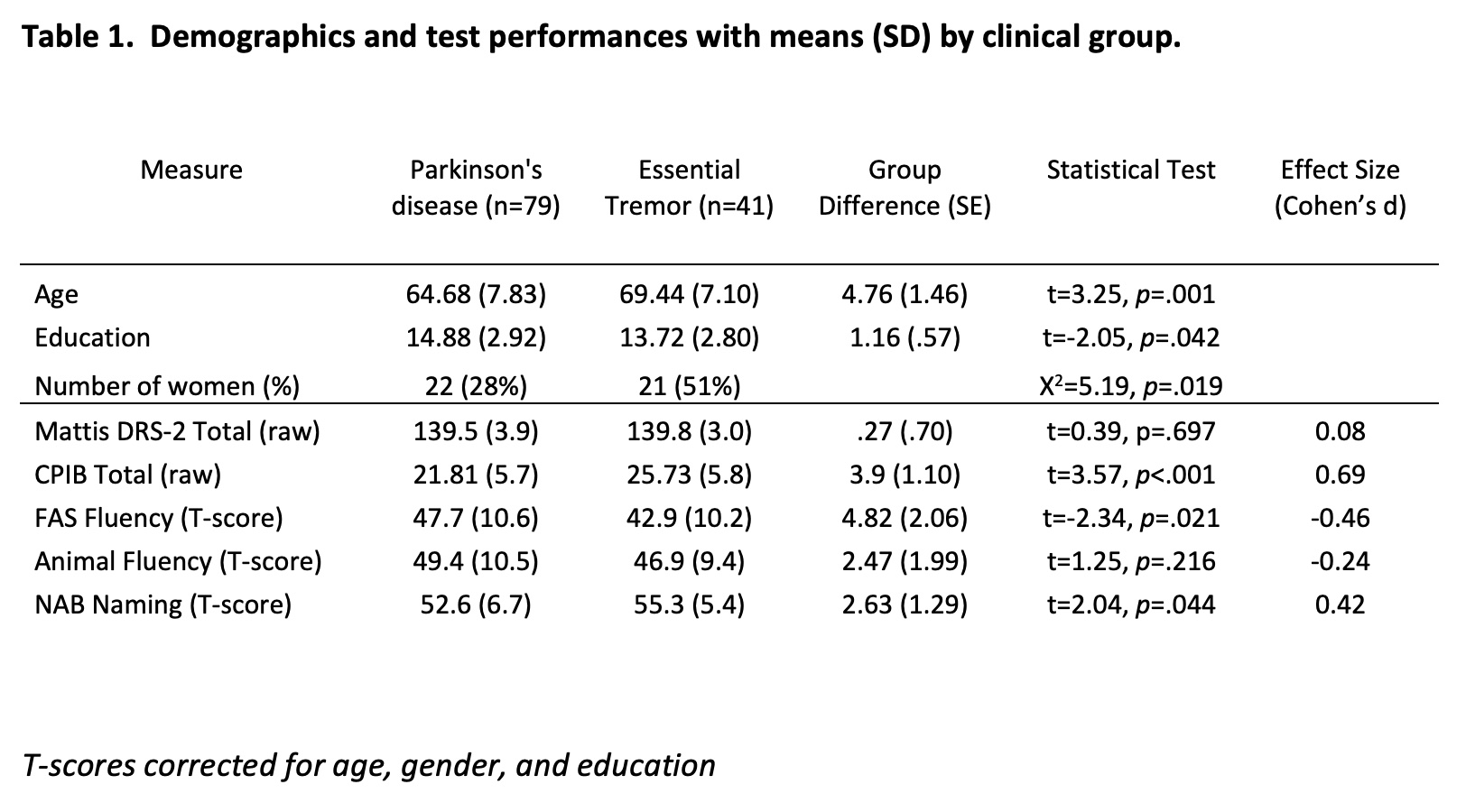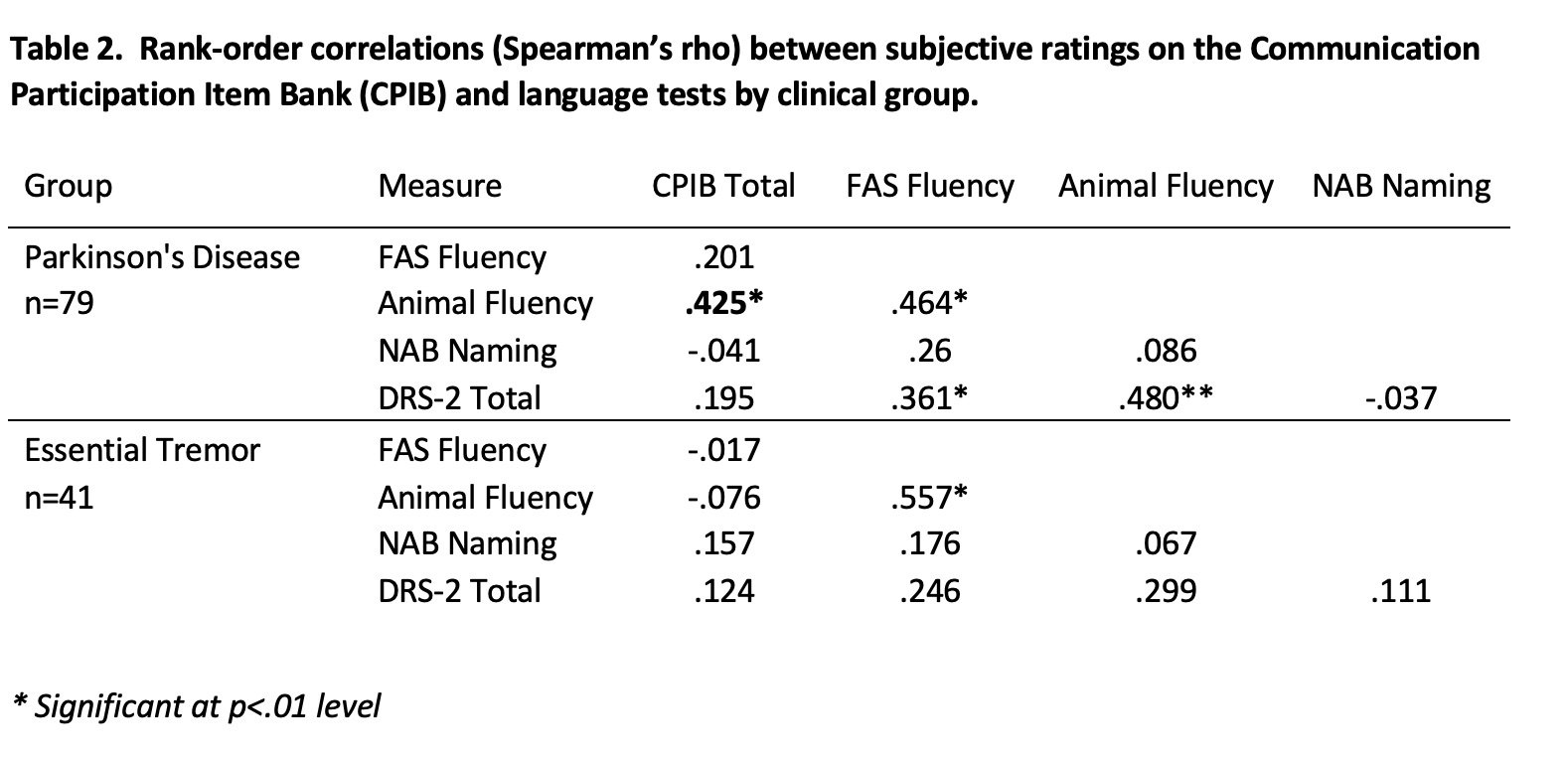Category: Rating Scales
Objective: Determine if expressive language measures from neuropsychological testing correspond to subjective communication struggles in Deep Brain Stimulation (DBS) candidates.
Background: A number of studies have reported decrements on tests of verbal fluency following DBS in Parkinson’s disease (PD) and Essential Tremor (ET)[1]. Fluency deficits observed in presurgical evaluations are therefore considered in assessing candidacy and target selection. However, correspondence between fluency test performance and real-world communication is unclear.
Method: The Communication Participation Item Bank (CPIB) is a self-report scale of the extent to which a neurologic condition interferes with communication across 10 different contexts[2]. The CPIB was administered to 79 PD and 41 ET patients during pre-DBS neuropsychological evaluations. Neuropsychological test scores were corrected for demographics according to test manuals. Group differences were assessed using independent sample t-tests. Correlations with language measures were examined separately by group.
Results: No group differences were observed on cognitive screening (Mattis Dementia Rating Scale). The PD group performed slightly better than ET on phonemic fluency and slightly worse on confrontation naming; however, the PD group endorsed significantly more communication interference on the CPIB [table1]. In PD but not ET, worse scores on semantic fluency were associated with lower CPIB scores (more interference), Spearman’s r=.425, p<.001. Phonemic verbal fluency and confrontation naming did not show statistically significant associations with CPIB in either group [table2].
Conclusion: Current findings suggest limited correspondence between expressive language tests and reported real-world interpersonal communication struggles for individuals with PD and ET seeking DBS surgery. The need for a functional communication instrument in this setting is thus emphasized. Future studies will examine post-surgical changes on subjective and objective measures.
References: 1. Cernera, S., Okun, M. S., & Gunduz, A. (2019). A Review of Cognitive Outcomes Across Movement Disorder Patients Undergoing Deep Brain Stimulation. Frontiers in neurology, 10, 419.
2. Baylor, C., Yorkston, K., Eadie, T., Kim, J., Chung, H., & Amtmann, D. (2013). The Communicative Participation Item Bank (CPIB): item bank calibration and development of a disorder-generic short form. Journal of speech, language, and hearing research : JSLHR, 56(4), 1190–1208.
To cite this abstract in AMA style:
T. Turner, L. Blackett, F. Rodriguez-Porcel. Association between subjective and objective language measures in DBS candidates [abstract]. Mov Disord. 2023; 38 (suppl 1). https://www.mdsabstracts.org/abstract/association-between-subjective-and-objective-language-measures-in-dbs-candidates/. Accessed December 16, 2025.« Back to 2023 International Congress
MDS Abstracts - https://www.mdsabstracts.org/abstract/association-between-subjective-and-objective-language-measures-in-dbs-candidates/


